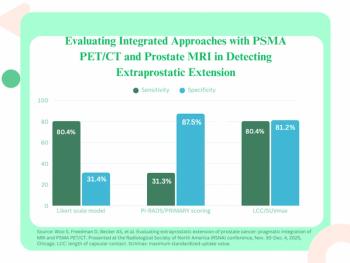
Is Gadolinium From MRIs Entering the Brain?
Higher cerebrospinal fluid gadolinium concentrations were detected within the first eight hours after gadolinium-based contrast agent administration.
Gadoterate meglumine, a gadolinium-based contrast agent (GBCA) can be detected in human cerebrospinal fluid (CSF) after intravenous administration for MR imaging, according to a study published in the journal
Researchers from Switzerland performed a retrospective study to evaluate whether gadolinium penetrated SCF after MR imaging with GBCA.
The researchers analyzed 60 CSF samples from 57 patients (median age, 50 years) who underwent one contrast material–enhanced MRI examination with gadoterate meglumine within 60 days of CSF extraction between January and December 2016:
• Group 1: 31 samples acquired between 0 and 8 hours after MRI
• Group 2: 13 samples acquired 8 to 48 hours after MRI
• Group 3: 16 samples acquired 2 to 60 days after MRI
There were also 24 subjects (median age, 60.5 years) who served as a control group. Of this group, 22 had not received contrast with MRI, while the other two had GBCA-enhanced MRI scans one and three years, respectively, before CSF samples were taken.
The results showed higher CSF gadolinium concentrations were detected within the first eight hours after GBCA administration.
• Group 1: Mean concentration was 1,152 ng/mL ± 734.6
• Group 2: Mean concentration was 872 ng/mL ± 586
• Group 3: Mean concentration was 121 ng/mL ± 296.3
All but two samples from the 24 control patients were negative for the presence of gadolinium, the researchers noted. Those samples were from patients who had undergone GBCA-enhanced MRI examination more than a year before CSF extraction (0.1 and 0.2 ng/mL after one and three years, respectively). The concentrations in three patients with chronic renal insufficiency, one with cerebral toxoplasmosis, and one with liver cirrhosis were higher than the mean concentrations.
The researchers concluded that gadoterate meglumine can be detected in human CSF after intravenous administration.
Newsletter
Stay at the forefront of radiology with the Diagnostic Imaging newsletter, delivering the latest news, clinical insights, and imaging advancements for today’s radiologists.



























